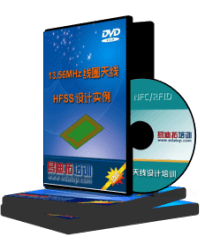- 易迪拓培训,专注于微波、射频、天线设计工程师的培养
13.56MHz Antenna Q factor - what is good value
My question is: what is a good Q for those two standards?From what I've read, a higher Q will give longer read distances (can anyone explain that?), but also obviously a lower bandwidth.I'm just wondering if anyone has experience designing these antennas and can offer some insight into what I should set the Q at.
Thanks!
Bandwith respectively intended data rate is the criterion to set up the antenna Q
The relation of Q and range is in conjunction with transmitter power. A higher Q means higher field strength with same
input power. But all RFID standards specify also a maximum field strength at the tag. So there's no use in increasing the field
strength above a certain value depending on the loop size and the respective RFID standard. For 14443, safe operation
directly at the loop should be possible. For 15693, you possibly can specify a minimum operation distance, allowing a
higher operation range. Check the specifications for details.
i could give u an simplified answer.
the loop antenna is seen by a circuit as an inductor, thats why you match it with capacitors.
when u do that it becomes a parallel resonant circuit which is mainly described by its Q.
the Q in definition is the central frequency devided by the 3 db bandwith.
so the wigher the Q the lower is the bandwidth
and the wigher is the power transmitted to the load at resonance which is the central frequency.
so that's why it offers a longer read distance since power transfered is larger.
so in ur design u must choose the Q as large as possible as long it supports the bandwidth that the system must offer. this way you get max distance at a certain bandwidth.
Hi,
A typical transponder IC has Rload=20Kohm, with L=5.5uH, Rdc=3.5 Ohm >> with an N=1 windingon 1cm2 you can have a readdistance of 40-70 cm; depend of right tuned systems...
You must check, that with a bandwidth of ca. 1.5MHz on your needed distance the transponder min 2V becoms_this is the reason of compromiss between Rload(Q) readingsdistance & coil data...
K.
申明:网友回复良莠不齐,仅供参考。如需专业学习,请查看13.56MHz NFC/RFID天线设计培训课程。
上一篇:13.56MHz PA for RFID reader reference design.
下一篇:help with 13.56mhz long range RFID READER



